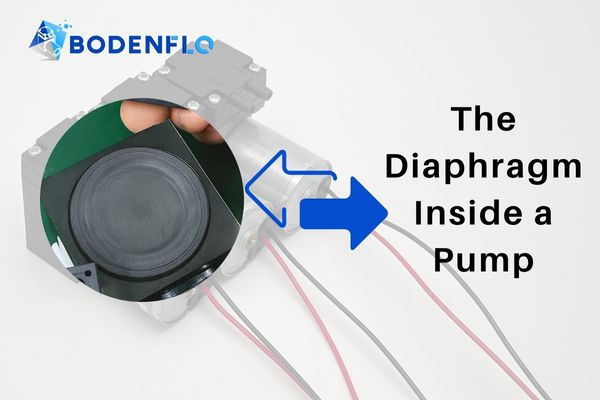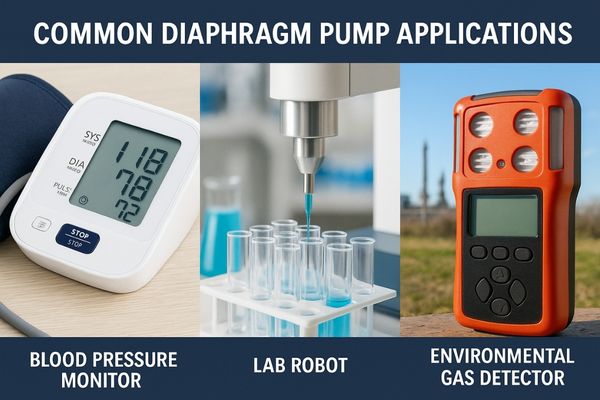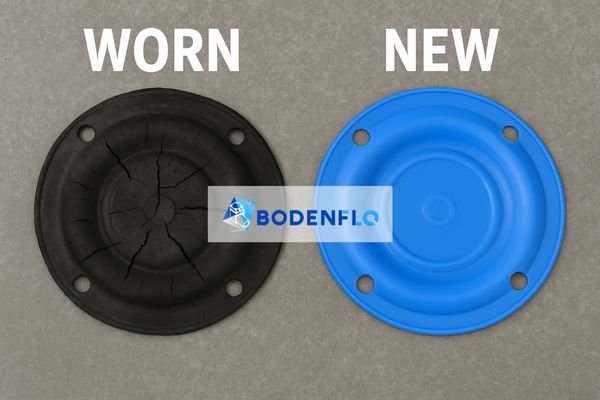Confused by pump terminology? Choosing the wrong pump can cause system failure, wasting time and money on a simple but critical component for your project.
A membrane pump is a positive displacement pump that uses a flexible membrane to move fluid or gas. A motor drives the membrane back and forth, creating suction and pressure through one-way valves.

As a project manager who has handled thousands of projects, I get this question a lot. It's a fundamental piece of technology, but the simple name hides some clever engineering. The membrane pump is the workhorse behind countless devices we use every day, from medical equipment to coffee machines. Understanding how this small but mighty component works is the first step to choosing the right one for your project. Let's break down the details and clear up some common points of confusion.
What Is the Difference Between a Membrane Pump and a Diaphragm Pump?
The terms "membrane" and "diaphragm" are used everywhere. This can be confusing when you are trying to specify the exact component you need for your device.
There is no difference. "Membrane pump" and "diaphragm pump" refer to the exact same type of positive displacement pump. "Diaphragm pump" is the more common and precise technical term.

This is probably the most common point of confusion I see, and the answer is refreshingly simple: they are the same thing. The heart of the pump is a flexible, circular sheet that separates the drive mechanism from the fluid chamber. This sheet can be called a membrane, which is a general term for any thin, sheet-like structure. It can also be called a diaphragm, which is the specific engineering term for a membrane used to separate chambers or transmit motion. While the terms are interchangeable, in the engineering world, especially in the US and UK, "diaphragm pump1" is the more common and professional term.
Why Terminology Matters
While we at BODENFLO know what you mean whether you say membrane or diaphragm, using the correct terminology is important. When writing technical specifications or communicating with suppliers, calling it a "diaphragm pump" ensures there is absolutely no ambiguity.
The Key Component: The Diaphragm
This flexible disc is the most critical part of the pump. Its material determines the pump's capabilities. It's typically made from highly engineered elastomers.
- EPDM: A great general-purpose material for air, water, and many mild chemicals.
- Viton (FKM): Offers excellent resistance to a wider range of chemicals and higher temperatures.
- PTFE (Teflon): Provides the highest level of chemical resistance2 for aggressive media.
The material choice affects the pump's chemical compatibility, lifespan, and ultimately, its cost.
Can You Safely Dead Head a Diaphragm Pump?
Worried about damaging your pump by accidentally blocking the outlet? This fear can lead to overly complex and expensive system designs with unnecessary bypass loops.
Yes, you can dead head a diaphragm pump without causing immediate damage. The pump will simply stop moving fluid when the outlet pressure equals its maximum capacity.
"Dead heading" means operating the pump with its outlet completely closed off. For many pump types, like centrifugal pumps, this is a recipe for disaster, leading to rapid overheating and failure. However, diaphragm pumps3 are different, and this is one of their biggest advantages. When you dead head a diaphragm pump, it builds pressure in the outlet line until it reaches the pump's maximum design pressure. At that point, the diaphragm still moves back and forth, but it can no longer force any more fluid or gas out of the chamber. It essentially stalls against the trapped pressure without harm.
What Happens Internally?
When the outlet is blocked, the diaphragm pushes forward on its pressure stroke, compressing the trapped fluid until the pressure equalizes. It simply can't push any harder. On its suction stroke, it still pulls back, creating a vacuum to draw in more fluid through the inlet valve. The motor will continue to run and draw power, and while it's not recommended to do this for extremely long periods as it can cause some motor heat and stress the diaphragm, it won't cause the pump to break.
The Benefit of This Feature
This capability massively simplifies system design. You don't need to install expensive pressure relief valves4 or bypass lines to protect the pump. It makes the technology perfect for applications that require intermittent flow, like a medical device dispensing a precise dose or an industrial system that needs to hold pressure.
What Are the Most Common Applications for Membrane Pumps?
You have a great pump but are not sure of its full potential. You could be missing opportunities to use this versatile technology in other products or systems.
Diaphragm pumps are used everywhere. Common applications include medical devices, environmental gas sampling, laboratory automation for liquid handling, and beauty devices like personal airbrush systems.

The unique combination of features in a diaphragm pump5 makes it one of the most versatile tools for an engineer. Because they are oil-free, they can be used in applications where purity is essential. Because they can run dry without damage, they are very forgiving. And because they are compact and efficient, they are ideal for portable devices. I've worked with designers using our pumps in an incredible range of products.
Where You Can Find Diaphragm Pumps
| Application Area | Why a Diaphragm Pump is the Perfect Fit |
|---|---|
| Medical Devices | Oil-free operation ensures patient safety. Precise, gentle flow is ideal for blood pressure monitors, nebulizers, and gas analyzers6. |
| Laboratory Automation | High accuracy for metering liquids, excellent chemical resistance, and the ability to self-prime make them perfect for analytic instruments. |
| Environmental Monitoring | Portability, long battery life, and reliability in the field are essential for portable gas detectors7 and air sampling equipment. |
| Printing & Packaging | Robust vacuum and pressure for pick-and-place machines and ink delivery systems8. |
| Food & Beverage | Can handle liquids gently without contamination, used in coffee machines, beverage dispensers, and water purification systems. |
What Are the Common Problems with Diaphragm Pumps?
Your pump has stopped working or its performance has dropped. Frustrated, you are not sure how to diagnose the issue or if it is even fixable.
The most common problems are diaphragm failure from age or chemical attack, and dirty or worn-out valves. Both issues lead to a significant loss of pressure or flow.

Diaphragm pumps are very reliable, but like any mechanical device, they have components that can wear out over time. When a customer calls me with a pump issue, it almost always comes down to one of two things: the diaphragm or the valves.
Diaphragm Failure
The diaphragm is constantly flexing, thousands of times a minute. Over its lifespan9, this can lead to fatigue, causing small cracks to form. A cracked diaphragm can no longer create a perfect seal, so the pump's ability to generate pressure and vacuum drops dramatically. The other cause of failure is chemical incompatibility. If a diaphragm made of EPDM is used with a harsh solvent, it might swell or become brittle, leading to a quick failure. This is why choosing the right material for your application is the most important decision you can make.
Valve Issues
The pump has small, one-way flap valves at the inlet and outlet. For the pump to work, these must create a perfect seal on each stroke. If a small piece of dust, debris, or crystallized liquid gets stuck in a valve and holds it slightly open, the pump will lose its ability to draw fluid in or push it out. This is the most common reason for a sudden drop in performance. Using a simple filter on the inlet side is the best way to prevent this problem.
Are Diaphragm Pumps an Expensive Solution?
You need a pump but are working on a tight budget. The perceived high cost of a quality pump might make you consider cheaper, less reliable alternatives.
The cost of a diaphragm pump varies widely based on performance, materials, and motor type. Basic models are very affordable, while high-precision, long-life medical-grade pumps will cost more.
This is a classic "it depends" question. You can find very cheap diaphragm pumps online, but you can also find high-end models that cost hundreds of dollars. The price is not arbitrary; it is a direct reflection of the components used inside and the performance they deliver. When selecting a pump, it's less about finding the cheapest option and more about finding the best value and reliability for your specific application.
What Determines the Price?
- Motor Type10: This is the biggest cost driver. A standard iron-core brushed DC motor rated for 500-1,000 hours is very cost-effective. A high-end coreless brushless motor designed to run for over 10,000 hours with precise speed control is a significant investment.
- Performance: Higher flow and pressure require a larger, more powerful motor and more robust construction, which naturally increases the cost.
- Materials: A pump with a standard EPDM diaphragm for air is less expensive than a pump with a specialized PTFE diaphragm and a stainless steel head designed for corrosive chemicals.
- Certifications11: Pumps like ours that are manufactured under a strict ISO 9001 quality system require rigorous testing and traceability. This adds to the cost but guarantees a level of reliability that is essential for commercial and medical devices. It is better to think about the total cost of ownership rather than just the initial price.
Conclusion
Membrane, or diaphragm, pumps are versatile, oil-free, and reliable. Understanding how they work, their applications, and their value helps you choose the perfect pump for your specific needs.
At BODENFLO, we specialize in delivering high-quality, customizable micro diaphragm pumps for a wide range of industries. Whether you need a standard solution or a fully tailored design, our team is ready to support your project with expertise and dedication.
📩 Contact us today at info@bodenpump.com to discuss your application and request a quote.
-
Understanding diaphragm pumps is crucial for selecting the right equipment for your needs, ensuring efficiency and reliability. ↩
-
Explore this link to understand how different materials impact chemical resistance in diaphragm pumps, ensuring optimal performance. ↩
-
Explore the unique benefits of diaphragm pumps, especially their ability to handle dead heading without damage, making them ideal for various applications. ↩
-
Understanding the role of pressure relief valves can enhance your knowledge of pump safety and efficiency, crucial for system design. ↩
-
Explore the advantages of diaphragm pumps in various engineering fields, highlighting their versatility and efficiency. ↩
-
Explore this link to discover diaphragm pumps specifically designed for gas analyzers, ensuring optimal performance and safety. ↩
-
Explore this link to discover top-rated portable gas detectors, ensuring safety and reliability in environmental monitoring. ↩
-
Explore this link to discover top diaphragm pumps specifically designed for ink delivery, ensuring optimal performance and quality. ↩
-
Understanding the lifespan of diaphragm pumps helps in maintenance and choosing the right materials, ensuring long-term reliability. ↩
-
Understanding motor types can help you choose a pump that meets your performance needs and budget. ↩
-
Exploring certifications will reveal how they ensure quality and reliability in pump performance. ↩


